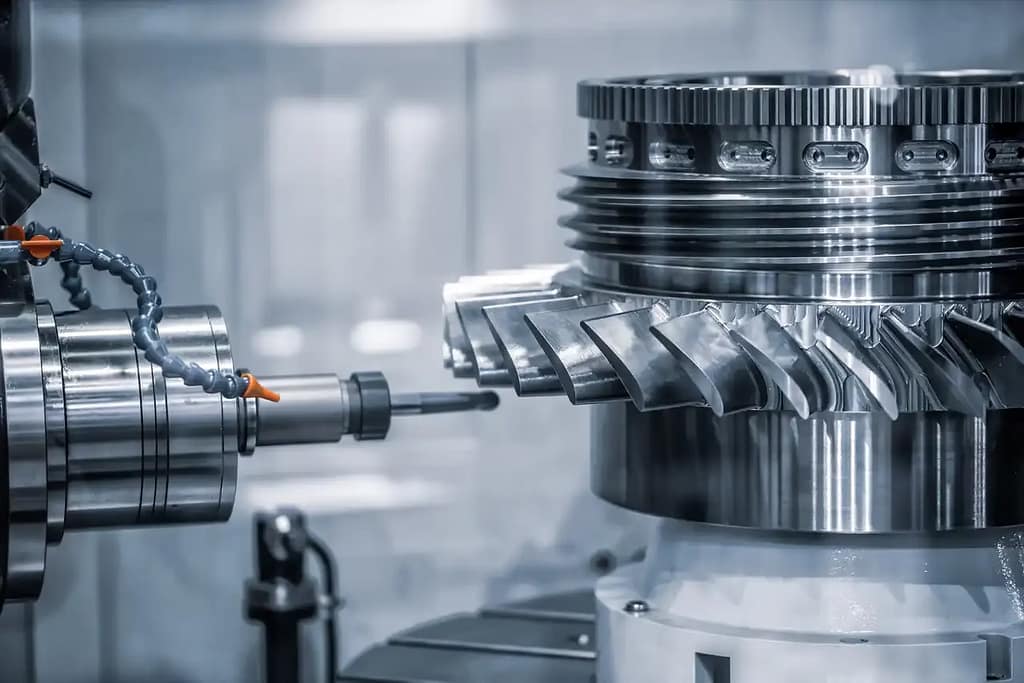Introduction: The High-Stakes World of Aerospace Machining
In the aerospace industry, precision isn’t just a goal—it’s an absolute necessity. Aerospace machining is at the core of building high-performance aircraft, satellites, and spacecraft, ensuring that every component meets the industry’s strict standards. But what makes this type of machining so unique? And what challenges must manufacturers overcome to push the limits of aviation and space exploration? Let’s dive into the world of aerospace machining and explore how cutting-edge technology is shaping the future of flight.
What Is Aerospace Machining?
Aerospace machining refers to the precision manufacturing of components used in aircraft, spacecraft, and defense systems. These parts range from turbine blades and landing gear to structural airframe components and tiny fasteners. Unlike standard machining, the aerospace industry demands extreme accuracy, lightweight materials, and high durability to withstand extreme temperatures, pressures, and forces.
The Unique Challenges of Aerospace Machining
1. Uncompromising Precision Requirements
Aerospace components must fit perfectly, often with tolerances as tight as ±0.0001 inches (2.5 microns). Even the slightest error could lead to catastrophic failures, making ultra-precision machining essential.
2. Complex Geometries and Designs
Aerospace parts often have intricate shapes, requiring multi-axis CNC machining, EDM (Electrical Discharge Machining), and other advanced manufacturing techniques to achieve complex contours.
3. Tough-to-Machine Materials
Aircraft and spacecraft demand materials that are lightweight yet incredibly strong, such as:
- Titanium (high strength, corrosion-resistant, but difficult to cut)
- Aluminum (lightweight, easy to machine, but lower strength)
- Inconel & Superalloys (extreme heat resistance, but highly abrasive to cutting tools)
These materials pose unique machining challenges, requiring specialized tools and techniques.
4. Extreme Quality and Safety Standards
Aerospace parts undergo rigorous testing, including X-ray inspections, ultrasonic testing, and CMM (Coordinate Measuring Machine) verification. Certification standards like AS9100 ensure that every part meets strict aerospace regulations.
Advanced Techniques in Aerospace Machining
5-Axis CNC Machining
Traditional 3-axis machining is often insufficient for complex aerospace parts. 5-axis CNC machining allows for precise multi-directional cutting, reducing setup times and improving accuracy.
Additive Manufacturing (3D Printing) for Aerospace
While machining is the primary method for aerospace component production, 3D printing is increasingly used for lightweight parts, reducing material waste and enabling rapid prototyping.
Cryogenic Machining
This cutting-edge process uses liquid nitrogen to cool the cutting tool, preventing material deformation and extending tool life when machining high-temperature alloys like titanium.
The Future of Aerospace Machining
As aerospace technology advances, machining techniques are evolving to keep up with:
Artificial Intelligence & Automation – AI-driven quality control and robotic machining improve efficiency.
Sustainable Machining – More eco-friendly coolants and materials reduce waste.
Hypersonic & Spacecraft Components – The need for precision machining extends beyond aircraft to space exploration and hypersonic travel.

Conclusion: Pushing Boundaries in Aerospace Machining
The future of aerospace machining is more exciting than ever, driven by innovation, advanced materials, and extreme precision. From next-generation fighter jets to deep-space missions, machining technology is playing a critical role in making the impossible possible. As new challenges emerge, one thing remains clear: precision machining will continue to shape the future of aerospace engineering.